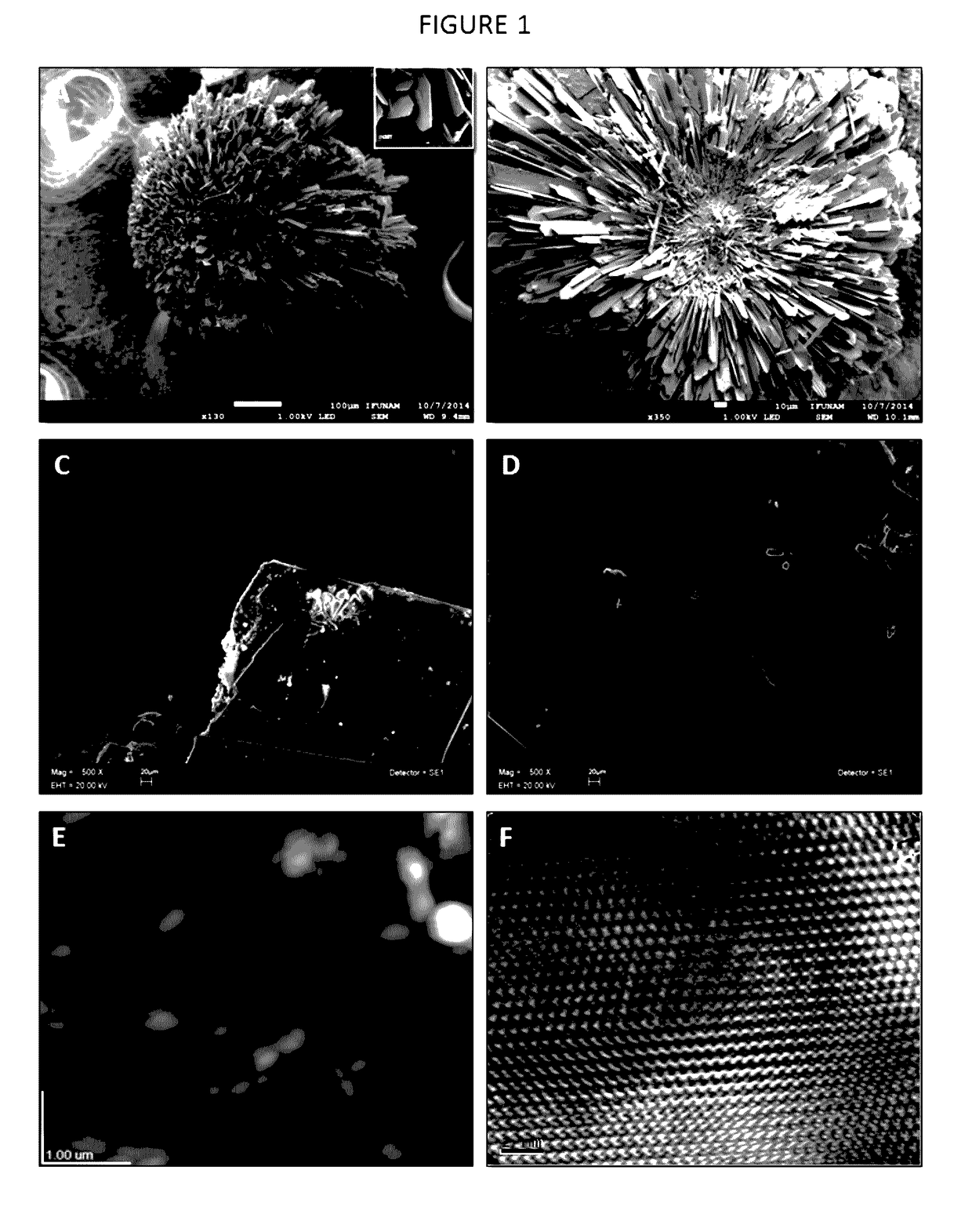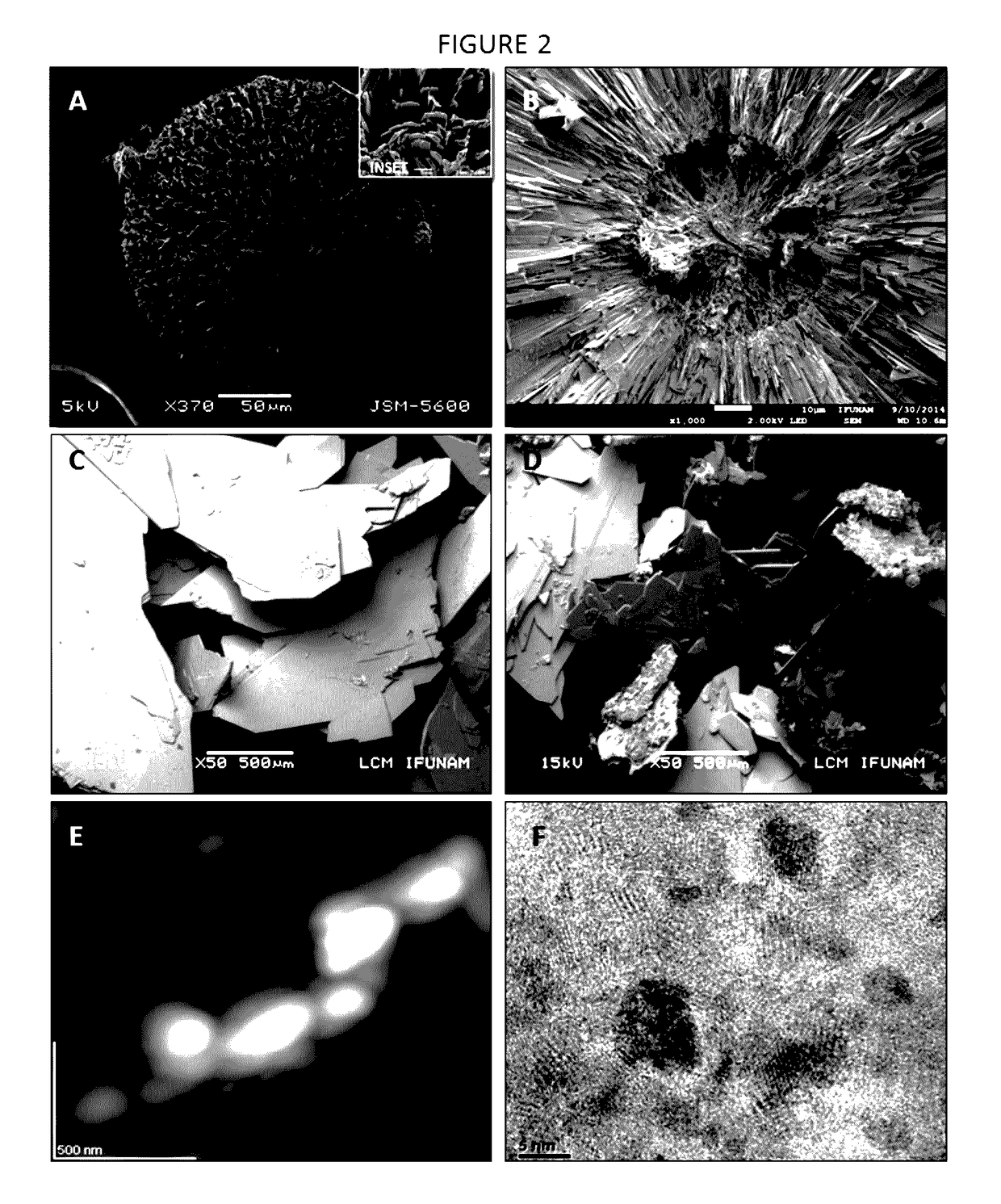Use of peptidic drugs for osteoporosis treatment and bone regeneration
a technology of osteoporosis and peptides, applied in the field of medicine, can solve the problems of crushing economic burden, significant morbidity and mortality of osteoporosis, and the expectation in this regard is not promising, and achieves the effect of reducing the risk of recurrence, and improving the effect of bone regeneration
- Summary
- Abstract
- Description
- Claims
- Application Information
AI Technical Summary
Benefits of technology
Problems solved by technology
Method used
Image
Examples
example 1
Model of Adult Wistar Rats that Demonstrates the Peptides' Use for Osteoporosis Treatment
[0111]Peptides with the sequences AVIFM (SEQ ID NO: 1) and MGTSSTDSQQAQHRRCSTSN (SEQ ID NO: 2) have been artificially synthesized and resuspended in a vehicle consisting in physiological saline solution (pH 7.4) that are inoculated intraperitoneally and / or subcutaneously and used for increasing bone mineral density, restoring bone microarchitecture as well as the physical-mechanical and biological properties in an experimental model of ovariectomized Wistar rats (Rattus norvegicus) with osteoporosis. We used 48 female rats of the Wistar strain, 3 months of age, with a weight of 250±20 gr. The animals were acclimated for 14 days at an ambient temperature of 22° C. with a photoperiod of 12 hours and relative humidity of 50%; food and water were ad libitum. The rats were sedated with acepromazine maleate (Relax 0.5 g / 100 ml) at a dose of 20 μg / Kg of weight and as general anesthetic, tiletamine and ...
example 2
Example 2
Bone Regeneration that Occurs Due to the Presence of Peptides with the Sequences AVIFM (SEQ ID NO: 1) or MGTSSTDSQQAQHRRCSTSN (SEQ ID NO: 2)
[0115]These peptides have been artificially synthesized and then combined with a three-dimensional scaffold made of gelatin (gelatin sponge), thus it was used for regeneration of critical size bone defects in an animal model: two groups of 14 male Wistar rats of approximately 250±20 grams of weight were used. Anesthesia of the rats was achieved through intraperitoneal injection of ketamine. The critical size defect was done by performing a 3 cm incision in the calvarial bone and then lifting a mucoperiostial flap. Subsequently, with a 9 mm trephine, a defect was created in the rat's calvarial bone. In the experimental group the formulation was introduced. It consisted of a 9 mm-diameter, porous, three-dimensional, gelatin-based (Gelfoam) disk containing the peptide at a concentration of 20-50 μg / disk. Previously, the dimensional scaffol...
example 3
Example 3
Manufacture of Three-Dimensional Scaffolds for Pre-Clinical Models
[0116]The three-dimensional scaffolds used in this invention are based on a gelatin sponge of commercially called Gelfoam®, which is an absorbable gelatin in sponge presentation. In this invention gelatin disks with a diameter of 9 mm and a thickness of 2 mm were cut. This dimensional gelatin sponge was soaked with the peptide AVIFM (SEQ ID NO: 1) or peptide MGTSSTDSQQAQHRRCSTSN (SEQ ID NO: 2) respectively, previously diluted in sterile saline solution at a concentration of 20-50 μg of either of the peptides object of this invention. Subsequently, the three-dimensional scaffold containing the peptide is desiccated in a desiccator at a 4° C. temperature for 1 hour. The three-dimensional scaffold in disk form was irradiated with ultraviolet light for 24 hours and used immediately to cover the defect of critical size defect in calvarial bone of Wistar rats.
PUM
| Property | Measurement | Unit |
|---|---|---|
| Weight | aaaaa | aaaaa |
| Acidity | aaaaa | aaaaa |
| Concentration | aaaaa | aaaaa |
Abstract
Description
Claims
Application Information
 Login to View More
Login to View More - R&D
- Intellectual Property
- Life Sciences
- Materials
- Tech Scout
- Unparalleled Data Quality
- Higher Quality Content
- 60% Fewer Hallucinations
Browse by: Latest US Patents, China's latest patents, Technical Efficacy Thesaurus, Application Domain, Technology Topic, Popular Technical Reports.
© 2025 PatSnap. All rights reserved.Legal|Privacy policy|Modern Slavery Act Transparency Statement|Sitemap|About US| Contact US: help@patsnap.com



